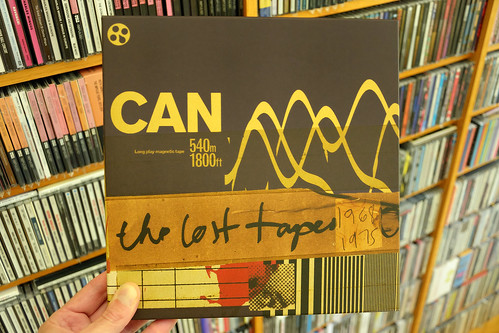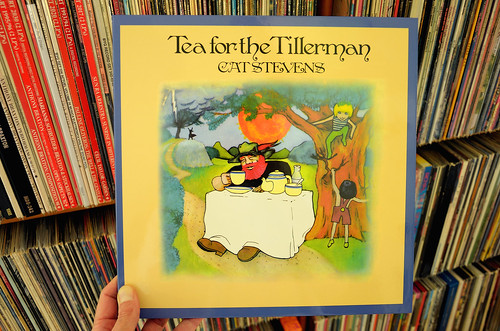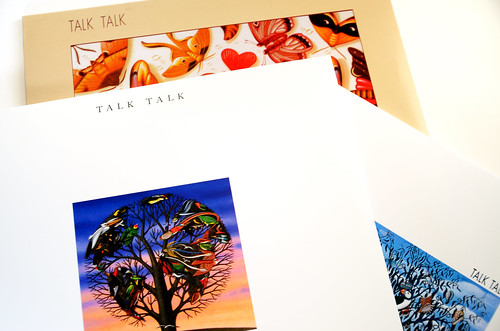* Corelli: Trio Sonatas (English Concert/Pinnock, et al.) (Archiv
Produktion CD)
* Geminiani: Concerti Grossi (After Corelli, Op.5) (AAM/Manze) (d.1)
(Harmonia Mundi 2CD)
* Geminiani: Cello Sonatas, Op.5 (ter Linden/Mortensen) (Brilliant
Classics CD)
* Venice Baroque Orchestra (Marcon/Carmignola): Concerto Veneziano
(Archiv Produktion CD)
* Venice Baroque Orchestra (Marcon/Carmignola): Concerto Italiano
(Archiv Produktion CD)
* Stravinsky: Piano Works (Sangiorgio) (Collins Classics CD)
* Sun Ra: Empty Foxhole Café, Philadelphia, PA 4-29-77 (AUD 2CDR)
* Sun Ra: Solo Piano, Volume 1 (Improvising Artists, Inc. CD)
* Sun Ra: St. Louis Blues: Solo Piano, Volume 2 (Improvising Artists,
Inc. CD)
* Sun Ra: WKCR Studios, Philadelphia, PA 7-08-77 (FM CDR)
* Anthony Braxton Septet +1: GTM (Iridium) 2007 Vol.2 Set 1 (New
Braxton House FLAC>CDR)
* Mary Halvorson Quintet: Saturn Sings (Firehouse 12 CD)
* Mary Halvorson Quintet: Bending Bridges (Firehouse 12 CD)
* Tomas Fujiwara & The Hook Up: The Air Is Different (482 Music CD)
* Earl Klugh: Finger Paintings (Blue Note/Mobile Fidelity LP)
* George Benson: Weekend In L.A. (Warner Bros. 2LP)
* Elixer: Hegalian Zone (ION CD)†/‡
* Sly & The Family Stone: There’s A Riot Going On (Epic/Sundazed LP
* Sly & The Family Stone: Fresh (Epic/Sundazed LP)
* Grateful Dead: Memorial Coliseum, Portland, OR 5-19-74 (selections)
(SBD 3CDR)
* The Band: Music From Big Pink (Capitol/Mobile Fidelity LP)
* Deep Purple: Machine Head (Warner Bros. LP)
* Can: Ege Bamyasi (Spoon/Mute SACD)
* Can: Future Days (Spoon/Mute SACD)
* Can: The Lost Tapes 1968-1975 (Spoon/Mute 3CD)
* Can: Canobits (d.1-3) (SBD/boot 4CDR)
* My Bloody Valentine: EP’s 1988-1991 (d.1) (Sony 2CD)†/‡
* Animal Collective: Merriweather Post Pavilion (Domino 2LP)
* Akron/Family: Set ‘Em Wild, Set ‘Em Free (Dead Oceans 2LP)
* Anathema: We’re Here Because We’re Here (KScope CD/DVD)†
* Anathema: Weather Systems (The End 2LP/CD)(†)
* Mike Scheidt: Stay Awake (Thrill Jockey LP)
*
White Hills: H-p1 (Thrill Jockey CD)(†)
* White Hills: Frying On This Rock (Thrill Jockey LP)
* Pelican: What We All Come To Need (Southern Lord CD)(†/‡)
* Pelican: Ataraxia/Taraxis (Southern Lord EP)
* Astra: The Black Chord (Rise Above/Metal Blade CD)(†/‡)
†=iPod
‡=car
Commentary:
The German band, Can, has always been one of those bands that more
people have heard of than actually heard. Like the old bon mot about the Velvet
Underground, not many people bought Can’s records at the time of their release
but every one of them formed their own band. Their influence has been pervasive since
the 1970s and can be heard in everything from Miles Davis’s On The Corner-era
recordings to New Wave and punk rock bands like the Talking Heads, the Fall, Sonic
Youth, et al.—not to mention the whole ambient/electronica scene and its
offshoots. Then there are the so-called “post-rock” bands like Radiohead, Tortoise,
Animal Collective and their ilk, who obviously spent a lot of time studying
Can’s classic albums during their formative years. Can were “post-rock” long before
anyone coined the term and those records sound as fresh today as they did back
in the ‘70s—the problem has always been trying to find them. Poorly served
during the nascent CD-era, it wasn’t until the definitive SACD remasters of
2004-2006 that their catalog has been widely available—and now, with the
release of The Lost Tapes 1968-1975, a truly complete picture of the Can’s
music and methodology can be discerned.
Founding members, keyboardist Irmin Schmidt and bassist Holger Czukay,
were former students of ultra-modernist composer Karlheinz Stockhausen and
deeply immersed in the avant-garde classical world centered in Darmstadt, West Germany—but
the burgeoning rock, funk and free-jazz scenes of the late-60s “corrupted” them;
in a 2004 interview, Schmidt stated:
I wanted to do something in which all contemporary music becomes one
thing. Contemporary music in Europe especially, the new music was classical
music, was Boulez, Stockhausen and all that. I studied all that, I studied
Stockhausen but nobody talked about rock music like Sly Stone, James Brown or
the Velvet Underground as being contemporary music. Then there was jazz and all
these elements were our contemporary music, it was new. It was, in a way, much
newer than the new classical music which claimed to be 'the new music’ (quoted
(with broken link) on Wikipedia).
With the addition of out-jazz drummer Jaki Liebezeit and Czukay’s 19-year-old
student, Michael Karoli on guitar, the band (originally called Inner Space)
enlisted their friend, Malcolm Mooney, as vocalist. Mooney an African-American
sculptor then living in Munich, immediately suggested changing their name to The
Can (later shorted to just Can) and together they set about recording material
for their first album. Mooney was
prolifically creative but mentally unstable—at times dangerously
confrontational—and his paranoiac rantings defined their early, Velvet
Underground-meets-James Brown aesthetic. But after experiencing a complete
nervous breakdown in late-1969, Mooney returned to the United States at the
advice of his psychiatrist and was replaced by Damo Suzuki, a Japanese musician
Czukay and Liebezeit found busking outside a local café. It was with Suzuki
that Can would refine their polyglot musical style and record their most highly
revered albums, Tago Mago (1971), Ege Bamyasi (1972) and Future Days (1973).
After Suzuki’s abrupt departure to marry his girlfriend (and become a Jehovah’s
Witness), Can soldiered on as quartet with Karoli and Schmidt assuming vocal
duties. Their subsequent albums were inconsistent but Can continued to be a
formidable live band, even as Czukay started drifting away, gradually replaced
by former Traffic band-members Rosko Gee and Rebop Kwaku Baah on bass and
percussion. The band finally called it quits in 1979, only to reunite with
Mooney and Czukay for a disco-infused album (Rite Time) and a few concerts in
1989. In the meantime, Can’s reputation as a genre-defining band has only continued
to grow.
Eschewing conventional song structures, Can’s music was built up out of
hours of improvisation and rudimentary overdubbing—amazingly, their classic
albums were made without the benefit of modern multitrack technology, relying
instead on a pair of humble 2-track stereo reel-to-reel machines and “bouncing”
tracks into order to make room for additional overdubs. These recordings were
then meticulously edited together (using a razor blade and splicing tape) to compile
the finished song, a collage technique borrowed from Stockhausen’s electronic
music and musique concrète. Propelled by Liebezeits’s powerfully motoric
drumming, Can’s music could be both dreamily hypnotic and teeth-grindingly
intense at the same time. Mooney tended to worriedly repeat a phrase to scarily
absurd lengths while the more ethereal Suzuki would croon, shout or whisper,
the mostly unintelligible, multilingual lyrics subsumed into the overall sound-world.
In concert, the band pursued “spontaneous compositions,” long, spacey jams that
would occasionally yield to familiar songs and riffs, only to erupt into bouts
of ferociously skronky noise. But forget about verse-chorus-verse
structures—this wildly experimental music is all about texture. No wonder the
band never had any hit records! But they did find some financial success
scoring soundtracks for film and television, a couple of which scraped the
bottom of the charts in their native country.
Given their unorthodox working methods (and a penchant for recording
every gig), many reels of tape were accumulated during the course of their
career and much speculation about their contents has ensued over the years,
fueled by a series of bootleg releases purportedly sourced directly from the
Can archives. Aside from
Unlimited Edition, a double-LP compilation of outtakes
and rarities released in 1976 and
Delay 1968, their posthumous, previously
unreleased first album (originally titled,
Prepared To Meet Thy Pnoom), not
much has seen the light of day. In 1999, the super-limited edition
Can Box was
released, containing two DVDs, two live CDs and a book—but it is now way out of
print and impossible to find. The DVDs, however, were reissued in 2004 (as
The
Can DVD) and is still available (and highly recommended). It seemed that was
the end of it until 2007, when the contents of Can’s studio in Cologne were
transferred to the
Rock ‘n’ Pop Museum in Gronau—all except for the tapes,
which were moved to the basement of Schmidt’s flat in Cologne. At the prompting
of his son-in-law, producer Jono Podmore, the reluctant Schmidt was finally
convinced to sort through it all. “This archive was a travesty of archival
organization,” says Schmidt in his liner notes to The Lost Tapes:
We always recorded everything. But in the early years we didn’t have
money to buy so many new tapes, so we would often re-record over them, months
and sometimes years later. We would keep the bits that we considered worth
keeping and recorded over the rest. Thereby we ended up with lots of isolated
fragments from different periods. Not easy to make sense of and find
chronological connections within this mess.
In February 2009, the tapes were taken to Sonopress in Gutersloh where
they were cleaned, restored and transferred to the digital domain, a process
that took over a year to complete, yielding about fifty hours of music. Of
this, three CDs worth were edited and compiled, with deliberations between
Schmidt and Podmore about the track list and running order continuing up until
the final mastering in February 2012. Finally released on June 19, The Lost
Tapes is a treasure trove of spectacular, previously unreleased Can music from
the peak period of their career.
Packaged in a nifty ten-inch square container made to look like an old
reel-to-reel tape box, The Lost Tapes boasts not only seven unheard studio
tracks with Mooney (and eight with Suzuki), but a bunch of film soundtracks, some
cool ambient instrumentals and five incendiary live recordings from 1972-75.
Some of the material shows the genesis and development of such classic tracks
as “Mother Sky,” “Vitamin C,” and “Spoon,” offering a fascinating glimpse into
their working methods in the studio. Interestingly, some of these songs began
as film soundtracks which were later reconfigured for later albums. Ultimately,
The Lost Tapes will probably only appeal to the hardcore Can freak—but that
shouldn’t stop the merely curious from picking it up. Sure, their seminal
albums are essential; but unlike most archival releases, The
Lost Tapes wouldn’t be a bad place to begin for a newbie—it’s just that good!
TheSpectator once wrote about Can in 1973: “If you consider yourself in any sense
involved with modern music, you cannot overlook them”—and that statement is a
true today as it was back then.
The Lost Tapes is a crucial document of one of
rock music’s most visionary and influential bands and should not be missed. The
sticker on the shrink wrap says, “limited edition”—I don’t know what that means
exactly, but I’d recommend grabbing it before it disappears for good. Over three hours of primo Can plus a lavishly illustrated book all for less than thirty bucks
—heck, you can hardly go wrong!








